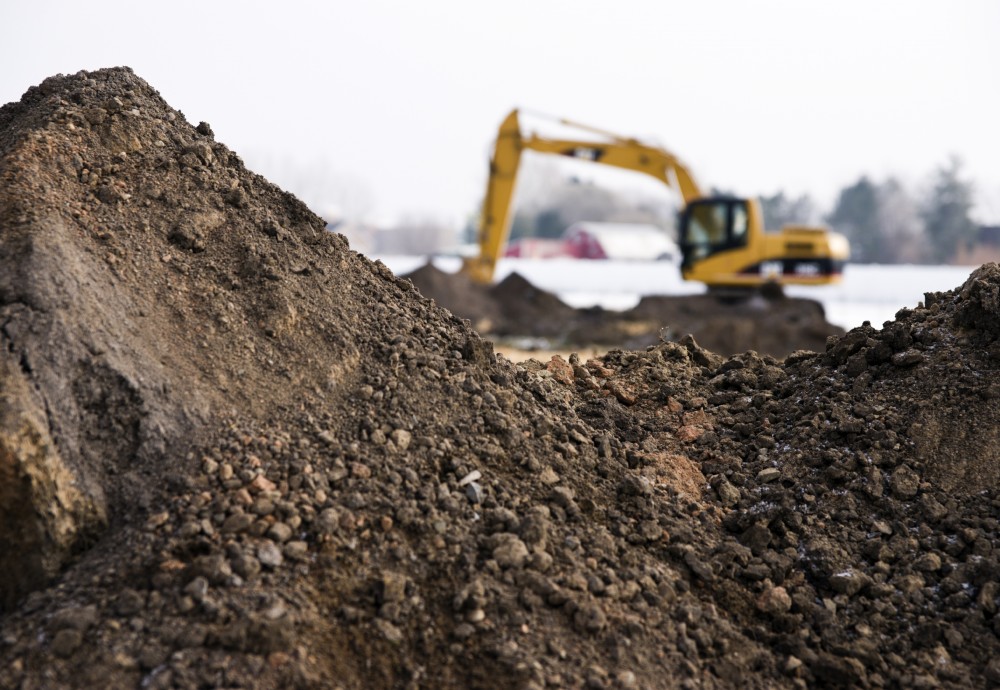ASBESTOS: PRACTICALITIES OF APPLYING INDUSTRY GUIDANCE TO ASBESTOS-CONTAMINATED SOILS
27 November 2019
Knowing the risks associated with using asbestos-contaminated soils and understanding how to achieve compliance and negate pitfalls and potential exposures are imperative during any assessment of potential brownfield land development.
Joe Jackson, Managing Director of Remediation and KES, Keltbray, informed delegates at this year’s Asbestos The Truth conference in late October 2018, about the key risks and lessons from the industry.
Risk Assessments, Licensing, and Notifications
During Jackson’s breakout session, he reviewed the need to refer to CAR-SOIL and other asbestos guidance and tools to effectively manage asbestos in soils and implement risk minimisation techniques in brownfield projects, potential developments and construction sites.
CAR-SOIL (The Control of Asbestos Regulations 2012: Interpretation for Managing and Working with Asbestos in Soil and Construction & Demolition materials: Industry Guidance) was published by industry body CL:AIRE in response to uncertainty within the industry around how to effectively apply asbestos regulations (The Control of Asbestos at Work Regulations (CAWR 2002) and subsequent Control of Asbestos Regulations (CAR 2012)) to asbestos in soils.
Learn more about the CL:AIRE CAR-SOIL publication here: CL:AIRE Publishes Asbestos In Soils Guidance CAR-SOIL ™.
Guidance and Risks of ACMs in Soils
There are multiple guidance documents available for understanding the risks involved with asbestos in soils and how to implement effective solutions designed to safeguard workers and those who may be at risk to potential exposures:
- CAR 2012
- CAR-SOIL
- CIRIA C73
- CIRIA Pocket Guide
- JIWG Decision-making Tool
According to Jackson, there are three key considerations to be made when working with asbestos-contaminated soils before conducting project operations:
- Getting the licensing/notification status correct
- Ensuring the correct training/ medical checks/ PPE and RPE have been provided for those operating within the contaminated soils.
- Appropriate controls and reassurance monitoring are in place to minimise potential exposures
Making the correct steps before, during and after conducting a project containing potential asbestos-contaminated soils is key to being able to justify the decision-making process and will help prevent or minimise unnecessary risks.
Getting It Right
Getting it right the first time can be the difference in safeguarding teams or exposing individuals to potentially life-threatening asbestos fibres. According to Jackson, the key risks associated with asbestos-contaminated materials (ACMs) in soil are:
- Exceeding control limits
- Exposure of asbestos fibres to operatives/neighbours/public etc
- Incorrect waste classification
- Failure to comply with regulations
- Reputational Damage
Waste Management
A major factor when encountering ACMs in soils is conducting effective waste management and implementing cohesive and tracked systems to ensure all ACM impacted soils are disposed of correctly. The first step to achieving this is in identifying whether or not, and to what degree, the soils have been contaminated.
Classification of ACM Impacted Soils
During Jackson’s breakout session, he asked, “At what level must ACM impacted soils be classed as hazardous?”
There is a legal requirement to correctly classify materials for disposal including asbestos-contaminated soils which are enforced by the Environmental Agency, Natural Resources Wales, and the Scottish Environment Protection Agency. In recent years, fines and cases have been made against a number of companies for failing to comply with legislation set out in the Waste Framework Directive (2009/98/EC). Waste classification is compulsory in order to determine the correct method for disposing of potentially harmful substances.
Using Waste Acceptance Criteria (WAC) testing methods and analysis determines the level of contaminants within the waste materials, in this case soils. This is a vital step in the correct waste disposal as contaminated soils disposed of incorrectly can affect the surrounding lands, groundwater, or surface water.
For detailed FAQs about WAC testing and soil, waste classification click here: SOCOTEC FAQs: Soil Waste Classification.
Remediation
For Jackson, there are 2 things to consider once ACMs in soils has been discovered:
- Explore the most suitable contaminated land remediation techniques
- Assess the long-term risks of leaving asbestos in situ and consider how it will be monitored over time
Remediation options depend on:
- Type, quantity, and distribution of asbestos present in soils
- Area, volume and depth of asbestos in relation to the site size
- What type of site is it – development for residential, industrial, commercial
- Who will be affected
- Health and safety implications (risk and liability)
- Cost and timeline
Discover more about contaminated land remediation and take the first step towards compliance: Contaminated Land Remediation Experts
Long-Term Risks
Options of leaving asbestos-contaminated land in situ require an assessment of the longer-term risks.
A Conceptual Site Model (CSM) is the preliminary risk assessment for contaminated lands. Based on desktop studies, reviewing all the available data relating to the site (the lands historic usage, maps, photos and any other information relating to the site) and a reconnaissance visit to the site to assess the quality and status of the land, the CSM will identify the suitability of retention of ACMs on site.
An intrusive Site Investigation (SI) goes beyond the CSM (which is based on evidence gathering and result presumptions). SIs involve thorough testing. The extent of the tests and samples gathered will depend upon a site by site basis, and will consist of testing, not just the soils themselves but the underground water and surrounding areas. SI includes conducting Trial Pit Investigations, gas monitoring and groundwater depth monitoring.
Taking the correct steps when managing asbestos-contaminated lands is vital to ensuring compliance and preventing unnecessary risks from being taken.
More Information
Keltbray: https://www.keltbray.com/
Free Asbestos in Soil Guidance Download – CAR-SOIL: https://www.claire.co.uk/projects-and-initiatives/asbestos-in-soil
CL:AIRE Published Asbestos In Soils Guidance CAR-SOIL ™: http://www.lucionservices.com/claire-publishes-asbestos-in-soil-guidance-car-soil-tm/
Waste Framework Directive (2009/98/EC): http://ec.europa.eu/environment/waste/framework/
SOCOTEC – Soil Waste Classification: http://ec.europa.eu/environment/waste/framework/
Contaminated Land Remediation Experts – Lucion Services: http://www.lucionservices.com/services/contaminated-land-remediation/
Trial Pit Investigation Services: http://www.lucionservices.com/services/trial-pits-exploratory-investigations/
Asbestos In Soils Testing & Inspection – Lucion Services: http://www.lucionservices.com/services/asbestos-in-soils-testing-and-inspection/
Risk Assessment FAQs
Conducting your health and safety risk assessment can be a daunting task. Before you get started, read our clients' top risk assessment FAQs.
_4.png)
Download From NexGen
RPE Face Fit Test Guide
Depending on the type of work being conducted, employees identified (through risk assessments) as being at risk of exposure to hazardous dust or other respirable substances must wear suitable face-fit tested RPE.
Discover the various types of RPE and whether your RPE needs to be face-fit tested with our free download from Lucion Consulting.
_1.png)
Download From NexGen
Tool Box Talk: Asbestos Awareness
As part of Lucion’s Take Care Be Aware initiative, we actively take care of our health and safety responsibilities, with continuous awareness of our commitments to knowledge share and educate.
In doing so we have created a ‘toolbox talk’ on asbestos awareness to raise awareness of the hazards associated with asbestos-containing materials, enabling safety professionals to share knowledge and overall save the time and effort in producing them for you and your teams.
_2.png)
Download From NexGen


 NexGen
NexGen












